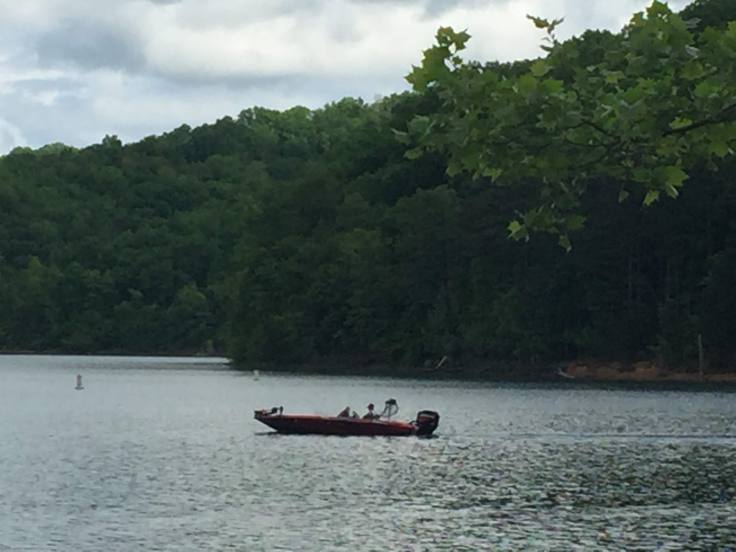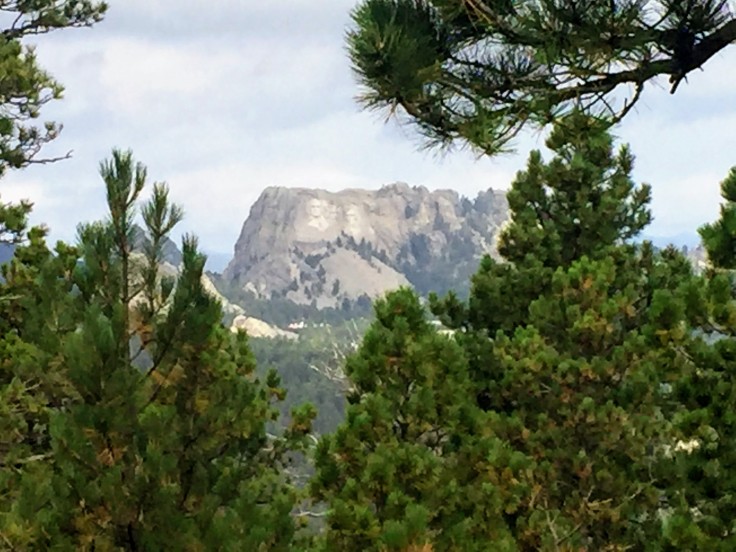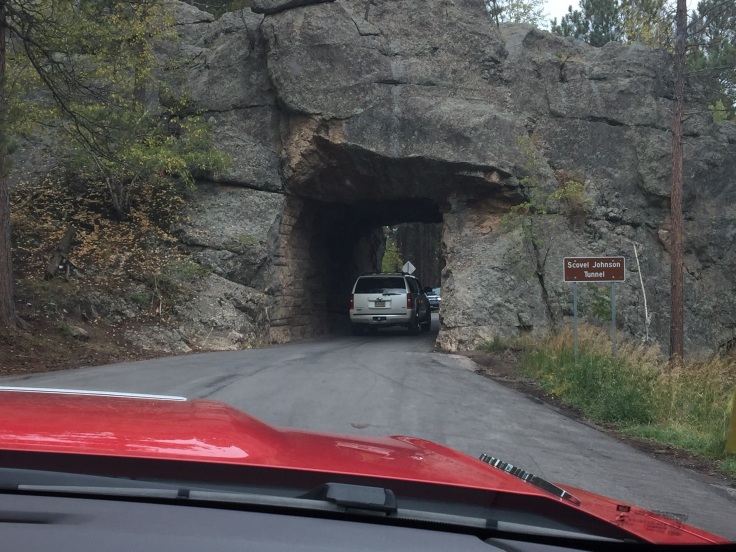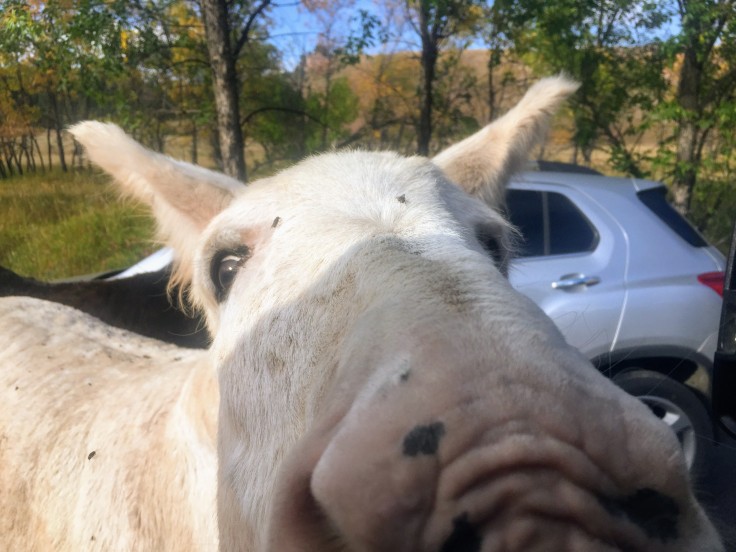We began today by spending time at OSCAR, the Oil Springs Cultural Arts and Recreation center; it is located in a school that was sold off in 1955 when the mining industry shut down and the population plummeted… (more on the mines later…) The school was purchased by a local businessman who has lent it to OSCAR for the past many years…


We did crafts. Just like – well, you know… There was wood carving, tin punching, painting, wire art, and several other things that we could try our hand at… We spent the morning crafting away, and they even provided a tasty mid-morning snack…


I did a little relief carving of an apple…

Lynda made something out of tin…

Some others made these wall plaques…

The sky was roiling when we returned to the Villa; we had a light lunch in the Airstream, and then we headed out for our next tour. The rain held off for the rest of the day…



We carpooled to the town of Van Lear, and the Webb General Store… About 1 1/2 miles down the road from the store is Butcher Hollow, or, in Kentuckian, Butcher Holler…
Here the story begins…
Loretta Lynn was born Loretta Webb on April 14, 1932, in Butcher Holler, in the “house” that is still standing today. She is the eldest daughter and second child born to Clary and Ted Webb. Ted was a coal miner and subsistence farmer. The youngest Webb daughter was Crystal Gayle (born Brenda Gail Webb). There were six other children born to Clary and Ted, but you only need to remember Herman, Loretta’s immediate younger brother.
Butcher Holler was one of many communities that loosely made up the town of Van Lear, KY. There were five coal and slate mines in the area dating from the early 20th century, with 2,500 miners, and four railroad lines serving the mines. These mines supported a community of 15,000 to 20,000 people. When the mines closed in 1955 the population plummeted. There is little remaining today of this thriving community. Today, even with recent “suburban” style growth, Van Lear has fewer than 2,000 people.
On January 10, 1948, 15-year-old Loretta Webb married Oliver Lynn, better known as “Doo”, or “Mooney”. They had met only a month earlier. Despite Doo’s promise to Loretta’s father never to take her away from Butcher Holler, the Lynns left Kentucky and moved to the logging community of Custer, Washington, north of Bellingham, when Loretta was seven months pregnant with the first of their six children. The happiness and heartache of her early years of marriage would help to inspire Lynn’s songwriting. In 1953, Doo bought her a $17 Harmony guitar. She taught herself to play the instrument, and over the following three years, she worked to improve her guitar playing. With Doo’s encouragement, Lynn began singing in local clubs in the late 1950s. (In the Movie, “Coal Miner’s Daughter”, she mentions that she was going to be playing in a “nasty ol’ honky tonk over to Lyndon”. I sincerely doubt that Lyndon ever had a “nasty ol’ honky tonk”…)
Lynn signed her first recording contract and cut her first record, “I’m a Honky Tonk Girl”, in February 1960. Her first album was recorded in Hollywood. The Lynns toured the country to promote the release to country stations. By the time the Lynns reached Nashville, the song was a hit, climbing to No. 14 on Billboard’s Country and Western chart, prompting her first appearances on the Grand Ole Opry in 1960. The rest, as they say, is history.
Her best-selling 1976 autobiography, Coal Miner’s Daughter, was made into an Academy Award–winning film of the same title in 1980, starring Sissy Spacek and Tommy Lee Jones. Spacek won the Academy Award for Best Actress for her role as Lynn.
Back to Lynn’s brother, Herman Webb. After the mines closed most of the Webb family moved to Indiana. But Herman always wanted to return. In 1975, he bought the local general store near Butcher Holler. He named it Webb’s Store and ran it until his death in 2018. Today his son and daughter run the store and offer tours of the house where Loretta Lynn grew up…
Butcher Holler is a fer piece down the road, about 2 miles past Van Lear, and about 10 miles past Paintsville, (pop. 5,700 today). Butcher Holler is way back in the hills…


This is Webb’s store…


The sign is a little worn…

There are signs everywhere hawking the tours in case no one is at the store…


A shuttle took us up the 1 1/2 mile one lane road to the house. We shouldn’t complain – when the Webbs lived here there was no road, just a footpath. (In the movie, “Coal Miner’s Daughter”, Doo drives his Jeep to the house by driving in the creek…)

The house is pretty much original. When Herman moved back to Butcher Holler in 1975 he did shore up the foundation and replace much of the front porch using 1970s techniques and design. (If you notice the front porch guardrail you will see that it is VERY similar guardrails in 1970s era apartment buildings in Orange County, CA…)
Inside the house we were given a tour by Hermasina, Herman’s daughter. There are four rooms plus two attic bedrooms. Much of the furniture is original to the house; there is a lot of memorabilia from the Webb and Lynn families…

This view up the valley was not like this when the mines were operation. There were few trees; any tree over 6″ in diameter would be needed as shoring in the mines, so this view would have extended miles up the valley. The area would be farmland for residents to raise their own vegetable gardens…

It was a great tour – very authentic and not too much hype and certainly no glossy brochures…

This road was only a footpath in the 1940s…


We forewent the shuttle ride and walked back to the Webb Store…

We did pass one of the entrances to one of the mines…

The store isn’t much – more memorabilia, a few staples, candy, and lots of moon pies and RC Colas…




Other than the store, just about all evidence of this thriving community is gone… No train tracks, no industry, no other businesses, very few people…
So we returned to the Villa. We had a little FaceTime with our grandson, Ian. He is five years old this week!

In the evening we returned to the Highway 23 Museum. We enjoyed a nice dinner, then the pickers began… Bluegrass music!







There was music, dancing, singing, and even some square dancing!




And an enjoyable time was had by all…









































